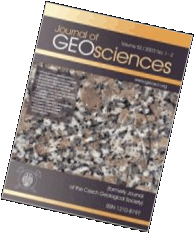 Export to Mendeley
Export to MendeleyOriginal paper
The inner architecture of tourmaline crystals, as inferred from the morphology of color zones in thin slices
Journal of Geosciences, volume 67 (2022), issue 2, 103 - 128
DOI: http://doi.org/10.3190/jgeosci.348
Tourmaline crystals are known for their variety of morphologies, intricate and complex growth features, and wide spectrum of colors. If dark tourmalines crystals are sliced and ground to an optimum thickness, intensely colored intrasectoral zones and other fine features become visible. Evaluating a series of slices lead to an understanding of the three-dimensional inner morphology of the crystal.
A screening of thousands of dark tourmaline crystals led to a collection of more than 30 000 slices, from which the most important morphological features are revealed. These features include sector zones, intrasectoral color zones, concentric growth-zones, diverse types of delta-shaped features as second intrasectoral triangular color domains, various mechanisms of repair of fracture surfaces (healing) and of corroded crystals. Six mechanisms are documented in subdivision phenomena, in which a single crystal is subdivided into a bundle of parallel needle-shaped crystals.
Hollow skeletal crystals and monocrystalline dendritic growth were found in the core of freely crystallized parallel aggregates. Such parallel aggregates with normal compact crystals in the same pocket could support the hypothesis that crystallization occurred from coexisting media, a melt and an aqueous phase that had undergone phase separation. In addition, structures similar to the parallel aggregates were found in graphic intergrowths of tourmaline with quartz, feldspar or mica.
Webdesign inspired by aTeo. Hosted at the server of the Institute of Petrology and Structural Geology, Charles University, Prague.
ISSN: 1803-1943 (online), 1802-6222 (print)
email: jgeosci(at)jgeosci.org


IF (WoS, 2024): 1.3
5 YEAR IF (WoS, 2024): 1.4
Policy: Open Access
ISSN: 1802-6222
E-ISSN: 1803-1943